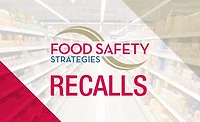Outbreak of E. coli infections linked to romaine lettuce

The CDC is advising that U.S. consumers not eat any romaine lettuce, and retailers and restaurants not serve or sell any, until more is learned about the outbreak. This investigation is ongoing and the advice will be updated as more information is available.
Consumers who have any type of romaine lettuce in their home should not eat it and should throw it away, even if some of it was eaten and no one has gotten sick.
This advice includes all types or uses of romaine lettuce, such as whole heads of romaine, hearts of romaine, and bags and boxes of precut lettuce and salad mixes that contain romaine, including baby romaine, spring mix, and Caesar salad.
If you do not know if the lettuce is romaine or whether a salad mix contains romaine, do not eat it and throw it away.
Wash and sanitize drawers or shelves in refrigerators where romaine was stored. Follow these five steps to clean your refrigerator.
Restaurants and retailers should not serve or sell any romaine lettuce, including salads and salad mixes containing romaine.
Latest outbreak information:
- Thirty-two people infected with the outbreak strain of Shiga toxin-producing E. coliO157:H7 have been reported from 11 states.
- Illnesses started on dates ranging from October 8, 2018 to October 31, 2018.
- Thirteen people were hospitalized, including one person who developed hemolytic uremic syndrome, a type of kidney failure. No deaths have been reported.
- The Public Health Agency of Canada has identified 18 ill people infected with the same DNA fingerprint of E. coli O157:H7 bacteria in two Canadian provinces: Ontario and Quebec.
- Epidemiologic evidence from the United States and Canada indicates that romaine lettuce is a likely source of the outbreak.
- Ill people in this outbreak were infected with E. coli bacteria with the same DNA fingerprint as the E. coli strain isolated from ill people in a 2017 outbreak linked to leafy greens in the United States and to romaine lettuce in Canada. The current outbreak is not related to a recent multistate outbreak of E. coli O157:H7 infections linked to romaine lettuce.
- CDC is advising that consumers do not eat any romaine lettuce because no common grower, supplier, distributor, or brand of romaine lettuce has been identified.
- This investigation is ongoing, and CDC will provide more information as it becomes available.
Looking for quick answers on food safety topics?
Try Ask FSM, our new smart AI search tool.
Ask FSM →







